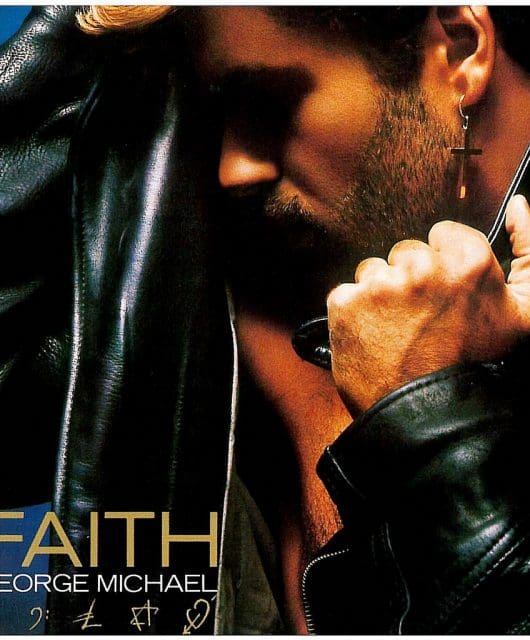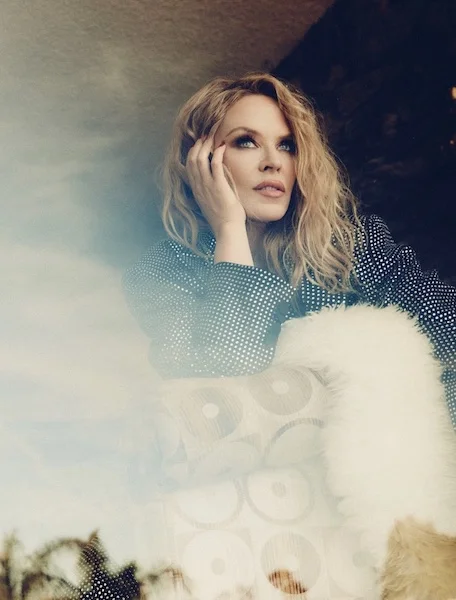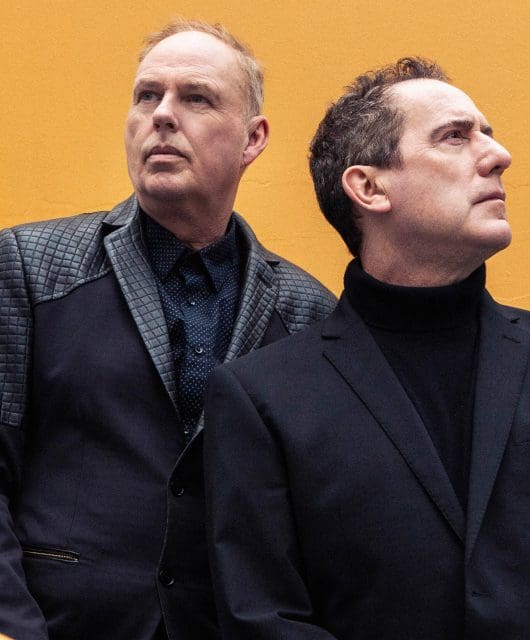Making Madonna – Like A Virgin
By Mark Lindores | October 24, 2021
The Like A Virgin album turned Madonna from a New York club queen to the most famous female artist in the world…

As New York’s achingly hip art set gathered at legendary nightclub the Paradise Garage on 16 May 1984 to celebrate artist Keith Haring’s first Party Of Life, the girl who had once dominated the dancefloor with her exuberant moves to Larry Levan’s iconic DJ sets, took to the stage for a special guest appearance in front of the vibrant crowd of which she had once been a part.
Having spent three months holed up in the city’s Power Station studios, Madonna saw the Party Of Life as the perfect platform to premiere two brand new tracks from her recently wrapped second album.
Although she was excited to air her new material for the very first time, the hipster audience remained largely indifferent as she performed Like A Virgin from a bed adorned with white lace before changing into a customised Haring jacket and skirt for Dress You Up.
Only pop culture prophet Andy Warhol had the foresight to recognise the earth-shattering potential of these new songs. “The crowd didn’t really take to Madonna,” recalls artist Kenny Scharf. “But Andy loved her – he told everyone that she was going to be the biggest thing ever.”
Madonna had been working on her second album since the beginning of 1984, penning songs with long-time friend and writing partner Stephen Bray. Her self-titled debut album had been a disappointing experience for her creatively, leaving her frustrated at how little her input and ideas had been welcomed by producer Reggie Lucas.
Despite the moderate success of that LP and Holiday becoming a Top 20 hit, Madonna was keen to move on and start work on her next project – and to do so on her own terms.
Determined not to repeat the mistakes of her debut and to ensure that the album would be exactly as she envisioned it, Madonna informed her label that she wanted to produce the record herself, a request that was immediately vetoed, much to her fury.
Aside from her previous LP not sounding the way she had wanted (with the exception of the tracks she and John ‘Jellybean’ Benitez had remixed before release), Madonna felt that she wasn’t taken seriously, and her talent was being undermined.
She saw the second album as her chance to prove herself. Livid that Warner Brothers didn’t believe in her enough to grant her full creative control, she publicly vented during interviews, detailing her battles against label bosses to who she referred to as “a hierarchy of old men”.
“It’s a chauvinistic environment to be working in because I’m treated like this sexy little girl,” she fumed to Rolling Stone. “I always have to prove them wrong. This is what happens when you’re a girl – it wouldn’t happen to Prince or Michael Jackson. I had to do everything on my own and convince people that I was worth a record deal. After that, I had the same problem trying to convince them I had more to offer than a one-off girl singer. I have to win this fight.”
Read more: Madonna – Ray Of Light
Read more: Making Madonna’s Like A Prayer
Refusing to back down, the record label offered Madonna a compromise – the choice of any producer she wanted. Mollified, she appealed to Sire Records boss Seymour Stein for help in a letter in which her frustrations over “the producer predicament” were evident.
“Here I am forced to choose a man once again – help me!” she wrote, listing possibilities such as Trevor Horn, Jellybean, Laurie Latham, Narada Michael Walden and Nile Rodgers before signing off, “Furious love, Madonna”.
Although she had presented a shortlist of ideal collaborators, Madonna had made it clear that Rodgers was her first choice, declaring him a “genius”, citing his production work with Diana Ross, Sister Sledge and David Bowie as examples, as well as his own Chic records which she adored.
A meeting with Nile was arranged during which she played him the demos she’d written with Stephen Bray and told him: “If you don’t love these songs we can’t work together”. Affronted by her bluntness, Rodgers later revealed that he told her: “I don’t love them now, but I will when I’ve finished working on them!”
Satisfied, Madonna accepted her label’s offer to have Nile produce the entire album. Writing in his autobiography, Le Freak, Nile revealed that the fee he earned for producing the album was more than most artists earn from their own records, adding: “I’m pretty sure she hasn’t paid a producer as much since then either!”
The subject of money remained prevalent once recording had begun, with Madonna’s tyrannical manner of communicating with musicians proving problematic. She was in every recording session for the entire duration – whether she was required to be or not and expected similar dedication from the personnel.
If a musician arrived late or didn’t seem to be giving 110%, Madonna barked at them, “Time is money, and the money is mine!”, something which did not go down well with the experienced professionals.
Nile had brought along the Chic Organisation band with him to play on the record, including bassist Bernard Edwards and drummer Tony Thompson, as well as sound engineer Jason Corsaro whose idea it was to record digitally, at the time a new way of recording.
Read more: Madonna On Film
Read more: The Lowdown – Madonna
The combination of synths and programmed drums with live instrumentation gave the album its bombastic, dynamic sound, elevating it from the dance-pop feel of Madonna’s earlier tracks which she felt were “weak”.
Despite the band having a wealth of experience between them, working across genres and with a myriad of artists, Madonna had no qualms about telling them if she didn’t like the way they were playing something or suggesting alternatives.
Whether it was because she’d been burned by the experience on her debut album and felt the need to overcompensate to make her ideas heard or was just plain rude, the band did not appreciate someone they saw essentially as a rookie being so abrasive and disrespectful towards them.
On one occasion, after she furiously berated a musician for taking a toilet break, Nile walked out of the studio and told her he was leaving the project, forcing Madonna to apologise and rethink the way she communicated from that point onwards. Though it wouldn’t be the last time they would have disagreements, they were resolved cordially.
When Warner’s A&R Michael Ostin played the pair Like A Virgin and Material Girl, songs he felt would work alongside Madonna’s own compositions, she instantly loved the former, immediately taken with the provocative title as well as the song itself.
Rodgers wasn’t initially sold on the track and felt Material Girl was the better song, but Madonna was adamant that Like A Virgin was going to be the first single and would also be the title of her second album. Nile reminded himself that it was ultimately her decision as it was her name on the LP cover.
With work on the record complete by May 1984, Madonna was readying it for a summer release, but once again faced pushback from the label who decided to delay it due to the sudden success of her debut album.
Thanks largely to heavy rotation on MTV, Borderline had just become her first Top 10 single in the United States and the album was climbing the charts on the back of that, approaching one million sales. Though she was desperate to release her new material, Madonna relented and agreed to postpone its release to November.
The restless singer utilised the time that she had originally planned to be promoting her album by flying to Venice to shoot the video for Like A Virgin and signed on to star in her debut film, Desperately Seeking Susan. She also worked with stylist Maripol and photographer Steven Meisel on a series of photoshoots which would become the cover of the album and singles.
Playing with the virgin/whore dichotomy, her name and the album title were completely at odds with the overtly sexual image she presented, dressed in bridal regalia, lingerie, crucifixes and a ‘Boy Toy’ belt buckle.
The wanton bride persona became emblematic of the Like A Virgin era, and never was it more impactful than Madonna’s iconic performance at the first MTV Awards in September 1984. Her first major performance of the track, she began it atop a giant wedding cake and ended it lying on the floor with her underwear on full display.
While some of her peers slammed the brazen sexuality of her performance as trashy and cheap – her manager Freddy DeMann was backstage furious thinking her outrageous set was career ending – the appearance could not have garnered better publicity for Madonna, whose rebellious spirit endeared her to legions of teenage girls across the US. With her name on everyone’s lips, the timing was perfect for the unveiling of the single and album in November 1984.
Read more: Madame X review
“It’s a lot more grown up than my first album,” the proud star told MTV. “It’s more well-rounded, style-wise. My first one was termed a dance record and was all up-tempo dance music, but this one has a lot of different sounds. There’s stuff that sounds like old Motown, there’s stuff that’s very high-energy, some songs are very English-sounding, very techno, there’s lots of synths, and two ballads. Ultimately, it shows my growth as a singer and as a songwriter.”
The album received mixed reviews from critics but was a commercial smash, transforming Madonna from pop star to pop icon, sparking ‘Madonnamania’.
It reached No.1 around the world and dominated the charts for most of 1985 thanks to its four hits (its singles run was punctuated by Crazy For You and Gambler from the Vision Quest soundtrack as well as chart re-entries of her older singles), the Virgin Tour of the US and a show-stopping performance at Live Aid.
In the UK, the album was re-released to include Into The Groove (taken from the soundtrack to Desperately Seeking Susan), extending its success even further, leading to eventual sales of over 21 million copies worldwide.
In January 1984, Madonna had shocked the world when she announced to Dick Clark on American Bandstand that she wanted to rule the world. Just 18 months later, thanks to the astounding success of Like A Virgin, she was well on her way to achieving it.
The Songs
Material Girl
Despite becoming one of her signature songs and its title being a moniker which is still linked to the star 35 years later, Material Girl wasn’t actually written by Madonna. It was penned by Peter Brown and Robert Rans and submitted to Warner Brothers for consideration for one of their artists. A&R Michael Ostin heard the song and immediately knew that it would be a perfect fit for Madonna. A tongue-in-cheek satire on 80s materialism, both Madonna and Nile Rodgers loved the track when it was presented to them and the singer duly changed her mind about only including her own compositions on the record, which had been her original plan. Released as the second single from the album in 1985, Material Girl peaked at No.2 in the US and No.3 in the UK.
Angel
One of the demos written by Madonna and Stephen Bray in late 1983, Angel is a straightforward fluffy ode to being in the throes of a new love affair. A charming dance pop track with unmistakable Chic flourishes, the song remains a fan favourite but has been largely disregarded by Madonna who hasn’t performed it live since the Virgin Tour in 1985 and the track was edited out of the VHS release. During the performance, balloons were released onto the audience emblazoned with “Dreams Come True”, a line from the song. An incredible extended dance remix was created of the song, which featured elements of audience noise to give the impression of a live recording. The single reached No.5 in the US and the UK and was also a hit around the world, particularly Australia and Japan. In the United States, the 12″ single sold over a million copies due to the inclusion of Into The Groove on the B-side, which wasn’t released there as a single in its own right.
Like A Virgin
Like A Virgin was written by hitmakers Billy Steinberg and Tom Kelly about the former’s recent divorce and subsequent new relationship. Madonna replicated the guide vocal of the demo note for note, even though it was in a much higher register than was normal for her to sing in, prompting inaccurate stories at the time claiming her voice had been sped up to sound like Cyndi Lauper. Melodically, critics pointed out that its bassline was reminiscent of Michael Jackson’s Billie Jean and the Four Tops’ I Can’t Help Myself (Sugar Pie Honey Bunch) and when Madonna performed the song live on her first two tours, she interpolated each into Like A Virgin as a cheeky wink to her critics. The song gave Madonna her first No.1 around the world, topping the charts in the US, Australia, Canada and Japan. In the UK, it peaked at No.3, held off the top spot by Band Aid’s Do They Know It’s Christmas? and Wham!’s Last Christmas.
Over and Over
A new wave-inspired track reminiscent of some of the material that we have subsequently heard of Madonna’s pre-fame recordings while she was in various New York bands, Over And Over’s lyric captures the essence of the singer, speaking as it does about strength, resilience and picking yourself up no matter how many times you’re knocked down and forging your own path in the world – a theme that Madonna has explored frequently. Although she hasn’t acknowledged the song since 1985, Madonna was obviously proud of it – choosing it as the only non-single performed on the Virgin Tour and including it on her 1987 remix album You Can Dance.
Love Don’t Live Here Anymore
Warner Brothers’ Michael Ostin felt that the Like A Virgin album needed a ballad as respite from the up-tempo dance tracks and suggested a cover of Rose Royce’s Love Don’t Live Here Anymore for diversity (strangely, the song was a hit in the United Kingdom the following year for Madonna’s future Evita co-star Jimmy Nail). Its recording prompted a rare moment of self-doubt and vulnerability from Madonna who was daunted at the prospect of recording her first ballad and working with a live orchestra. Overcome, she dissolved into tears at the end of recording, her emotion left on the released song. A remixed version of the track was released in a few countries in 1996 to promote the ballads retrospective Something To Remember. Unexpectedly, Madonna also performed the song as part of her Rebel Heart Tour in 2015.
Dress You Up
An underrated Madonna classic, Dress You Up was the final track recorded for the album as it was submitted by writers Andrea LaRusso and Peggy Stanziale just as Madonna was completing the LP. It was only when the album’s release was delayed that Madonna was able to add it to the tracklisting. Peaking at No.5 in both the US and the UK, Dress You Up’s lyric, which juxtaposed fashion and sexuality, earned it a place on Tipper Gore’s ‘Filthy Fifteen’, a list of songs deemed sexually explicit and which required parental advisory before children could listen to them.
Shoo-Bee-Doo
A solo Madonna composition, the slightly saccharine Shoo-Bee-Doo was intended as a homage to Motown and the girl groups that Madonna had adored growing up in Detroit. An unremarkable mid-tempo track, it doesn’t hold up as well as others on the album and is dated by a solo from famed saxophonist Lenny Pickett. In the UK, it was featured on the B-side to Into The Groove.
Pretender
While the combination of live drums and guitar had added another dimension to Like A Virgin’s big moments, Pretender, a sparse synth-driven track with sequenced drums and a great melody is sonically more akin to the material on Madonna’s debut album. It was included as the B-side to Material Girl in the UK.
Stay
The earliest composition on the album, Stay is a combination of two tracks that Madonna wrote with Stephen Bray back in 1981, Stay and Don’t You Know. Despite the title, this version owes more to the latter, only the “Stay, stay darling” refrain comes from the 1981 version, the verses and lyrics are reworked from Don’t You Know. The track also included a sexy spoken interlude from Madonna, a trait she had begun on Physical Attraction from her first album and something she would explore more deeply on songs such as Justify My Love, Rescue Me and Erotica.
Check Out Madonna’s website here






